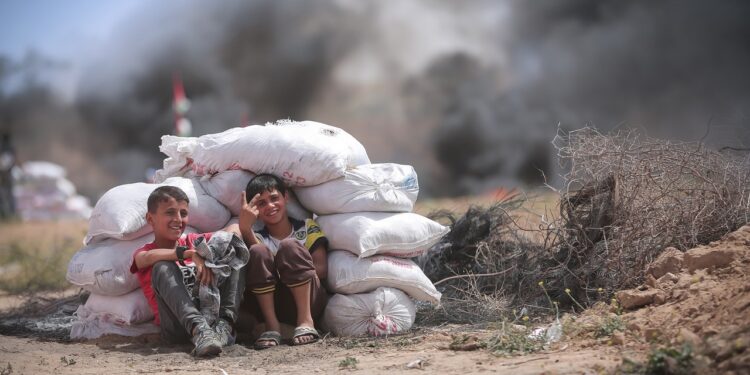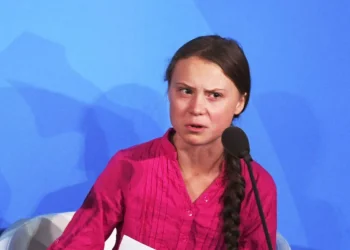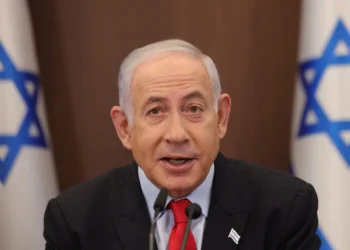As food becomes more valuable than life in Gaza, a disturbing pattern has emerged, desperate civilians chasing aid only to end up facing bullets. The U.S.-supported Gaza Humanitarian Foundation (GHF), originally intended to be a lifeline, now finds itself at the heart of a blood-soaked controversy.
In just over two months, more than 1,300 Palestinians have been killed while attempting to access food, according to the UN Human Rights Office. A staggering 859 of those deaths occurred around the very food distribution sites funded and supported by the United States. Another 514 were killed along aid convoy routes. These are not mere statistics—they are starving civilians who never made it home with food.
A Visit, A Photo, and A Crisis
Last Friday, U.S. President Donald Trump’s special envoy, Steve Witkoff, visited one of the food distribution sites in Gaza. The site is backed by GHF, a private American aid initiative that claims to serve over one million meals daily. Accompanying him was U.S. ambassador to Israel Mike Huckabee, who posted confidently on X (formerly Twitter): “GHF delivers more than one million meals a day. An incredible feat! Hamas hates GHF because it gets food to people without it being looted.”

Sounds like a noble mission, but reality on the ground tells a darker story.
While the delegates were smiling and taking photos, reports filtered in that 11 Palestinians were killed by Israeli airstrikes, including two near a GHF aid point. Human Rights Watch (HRW) released a damning report on the same day accusing Israeli forces of turning these aid centres into sites of “regular bloodbaths.”
Is Aid the New Warzone?
Human Rights Watch minced no words: “Israeli forces are not only deliberately starving Palestinian civilians, but they are now gunning them down almost every day as they desperately seek food.” The organisation accused the Israeli military of using starvation as a weapon of war, a practice long considered a violation of international law.
And the United States? Its hands aren’t clean either, according to HRW. By funding and supporting GHF without proper protection mechanisms, the U.S. has indirectly enabled a broken, militarised aid system that prioritises control over compassion.
Even worse, the humanitarian infrastructure in Gaza has been heavily sidelined. The long-standing UN-led system, despite its challenges, has now been overshadowed by the GHF, a group that operates without the same level of accountability, transparency, or coordination.
Whose Food, Whose Rules?
Israel insists that it’s not the villain here. The military claims Hamas is interfering with food deliveries and that its forces only operate “in proximity” to aid sites to maintain order. Yet the numbers and the corpses say otherwise.
The IDF says it’s reviewing the recent deaths, but no firm action has followed. Meanwhile, GHF continues operations, boasting about its 100-millionth meal delivered in Gaza, all in the name of “Trump’s call to lead with strength, compassion, and action.” The irony is chilling—because compassion shouldn’t come with collateral damage.
Diplomacy vs. Reality
Steve Witkoff’s visit wasn’t just symbolic; he also held talks with Israeli Prime Minister Benjamin Netanyahu on how to end the conflict, feed civilians, and secure the release of hostages. But Netanyahu’s stance remains unchanged—destroy Hamas, win the war. Humanitarian needs come second.
After Witkoff’s departure, Netanyahu met with Germany’s Foreign Minister Johann Wadephul, who delivered a message that didn’t need translation: “The humanitarian disaster in Gaza is beyond imagination… provide aid before mass starvation becomes a reality.”
The message may have been received, but whether it will be acted upon is another matter entirely.
Between Aid and Annihilation
So here we are, caught between the political theatre of high-level visits and the raw tragedy of dead civilians holding empty food containers. Gaza’s humanitarian crisis is no longer just a humanitarian issue; it has become a battlefield tactic, a diplomatic tightrope, and a moral test for the world.
And while countries argue over war tactics, ceasefires, and blame, people in Gaza continue to die, not in air raids or explosions, but while standing in line for bread.

















